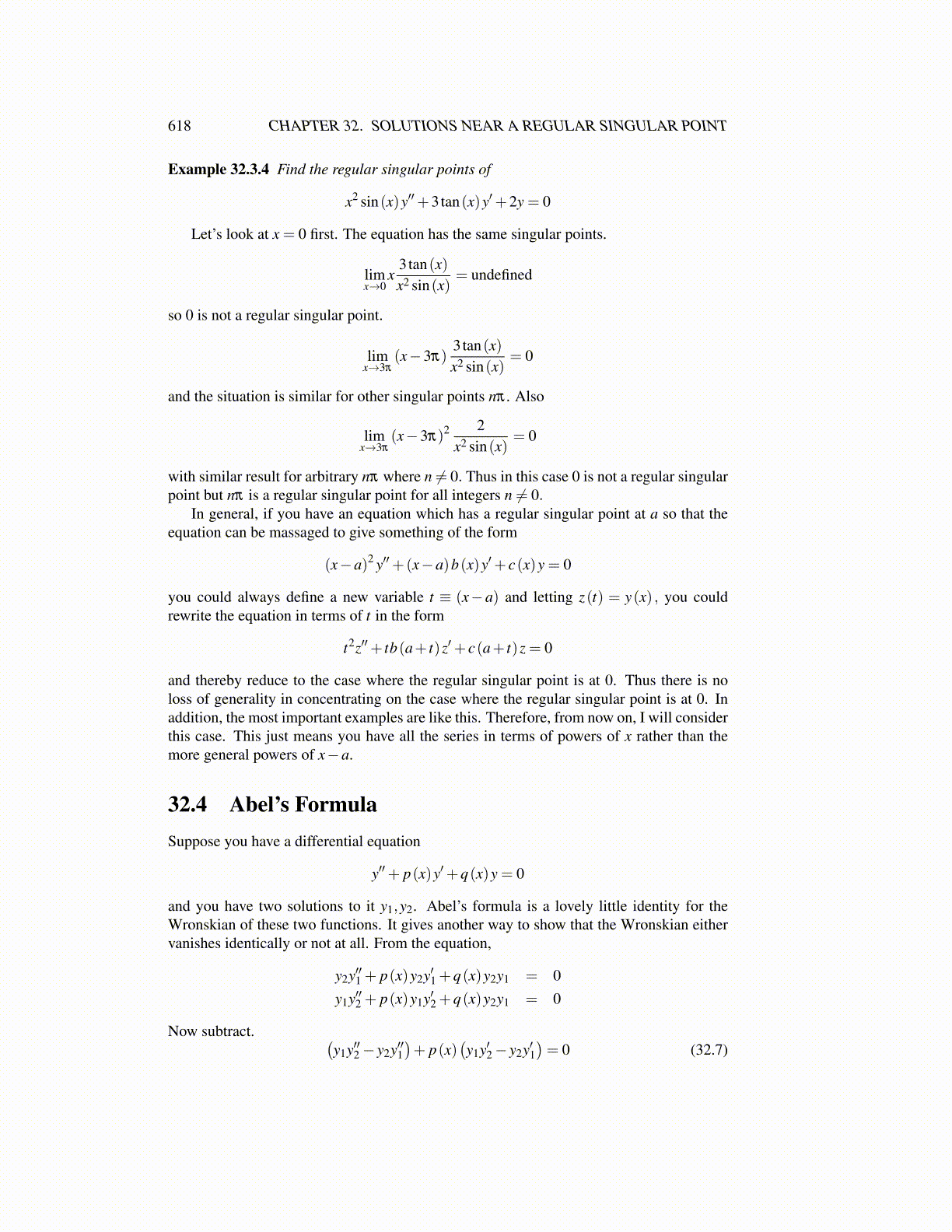
618 CHAPTER 32. SOLUTIONS NEAR A REGULAR SINGULAR POINT
Example 32.3.4 Find the regular singular points of
x2 sin(x)y′′+3tan(x)y′+2y = 0
Let’s look at x = 0 first. The equation has the same singular points.
limx→0
x3tan(x)x2 sin(x)
= undefined
so 0 is not a regular singular point.
limx→3π
(x−3π)3tan(x)x2 sin(x)
= 0
and the situation is similar for other singular points nπ . Also
limx→3π
(x−3π)2 2x2 sin(x)
= 0
with similar result for arbitrary nπ where n ̸= 0. Thus in this case 0 is not a regular singularpoint but nπ is a regular singular point for all integers n ̸= 0.
In general, if you have an equation which has a regular singular point at a so that theequation can be massaged to give something of the form
(x−a)2 y′′+(x−a)b(x)y′+ c(x)y = 0
you could always define a new variable t ≡ (x−a) and letting z(t) = y(x) , you couldrewrite the equation in terms of t in the form
t2z′′+ tb(a+ t)z′+ c(a+ t)z = 0
and thereby reduce to the case where the regular singular point is at 0. Thus there is noloss of generality in concentrating on the case where the regular singular point is at 0. Inaddition, the most important examples are like this. Therefore, from now on, I will considerthis case. This just means you have all the series in terms of powers of x rather than themore general powers of x−a.
32.4 Abel’s FormulaSuppose you have a differential equation
y′′+ p(x)y′+q(x)y = 0
and you have two solutions to it y1,y2. Abel’s formula is a lovely little identity for theWronskian of these two functions. It gives another way to show that the Wronskian eithervanishes identically or not at all. From the equation,
y2y′′1 + p(x)y2y′1 +q(x)y2y1 = 0y1y′′2 + p(x)y1y′2 +q(x)y2y1 = 0
Now subtract. (y1y′′2− y2y′′1
)+ p(x)
(y1y′2− y2y′1
)= 0 (32.7)